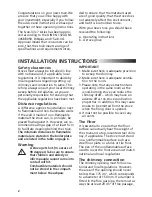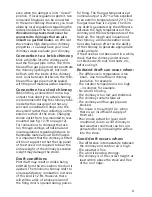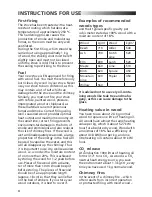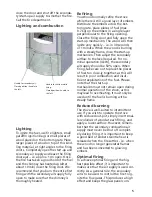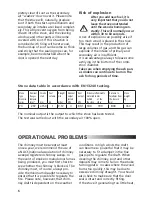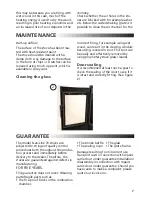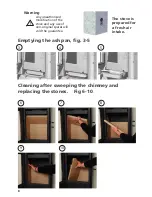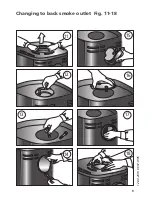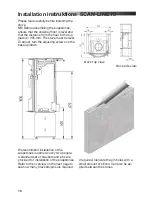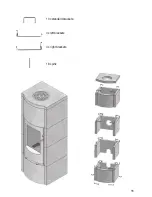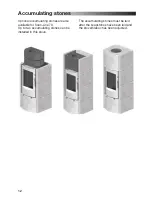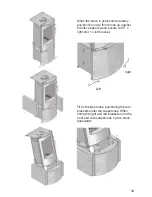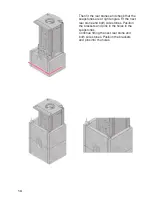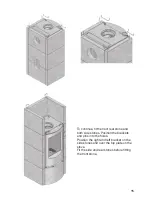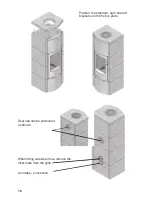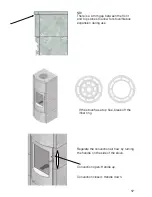
5
close the door and shut off the seconda-
ry/start-up air supply to smother the fire.
Call the fire department.
Lighting and combustion
Lighting
To ignite the fuel, use fire lighters, small
paraffin ignition bags or small pieces of
wood placed on the bottom grate. Place
larger pieces of wood on top of this kind-
ling material, at right angles to the firing,
doors. Completely open the start-up and
secondary air supply and leave the firing
door ajar – i.e. approx. 1 cm open. Once
the fire has taken a good hold of the fuel
and the chimney has heated up (after
about 10 min) close the firing door. We
recommend that you burn the entire first
firing with the secondary air supply fully
open to make sure that the chimney is
thoroughly heated.
Refiring
You should normally refire the stove
while there is still a good layer of embers.
Distribute the embers across the bot-
tom grate, place pieces of fuel (max
0.7 kg) on the embers in a single layer
perpendicular to the firing opening.
Close the firing door and fully open the
start-up mechanism. The wood will then
ignite very quickly – i.e. in 30 seconds
or 1 minute. When the wood is burning
with a steady flame, close the start-up
mechanism. Then adjust the secondary
airflow to the level required. For no-
minal operation (4 kW), the secondary
air supply should be 50% open. When
firing, take care not to place the pieces
of fuel too close-ly together, as this will
result in poor combustion and insuf-
ficient exploitation of the fuel. Please
note that the start-up
mechanism must not remain open during
normal operation of the stove, as this
may lead to overheating. It must only be
used until the fuel is burning with a
steady flame.
Reduced burning
The stove is well-suited to intermittent
use. If you wish to operate the stove
with reduced out-put, simply insert smal-
ler volumes of wood at each firing, and
apply a lower airflow. However, remem-
ber that the secondary combustion air
supply must never be shut off complet-
ely during firing. It is important to keep
a good bed of embers. Gentle heat is
released when the fire settles - i.e. when
the wood no longer generates flames
and has been converted to glowing
embers.
Optimal firing
To achieve optimal firing and the hig-
hest possible effect, it is important to
make sure that the air supply is used cor-
rectly. As a general rule, the secondary
air is to be used to control the fire to ig-
nite the flue gases. This produces a high
effect and keeps the glass panel com-
Handle for secondary air.
Closed position: handle to
the left.
Handle for airflow while
firing.
Closed position: handle to
the left.


